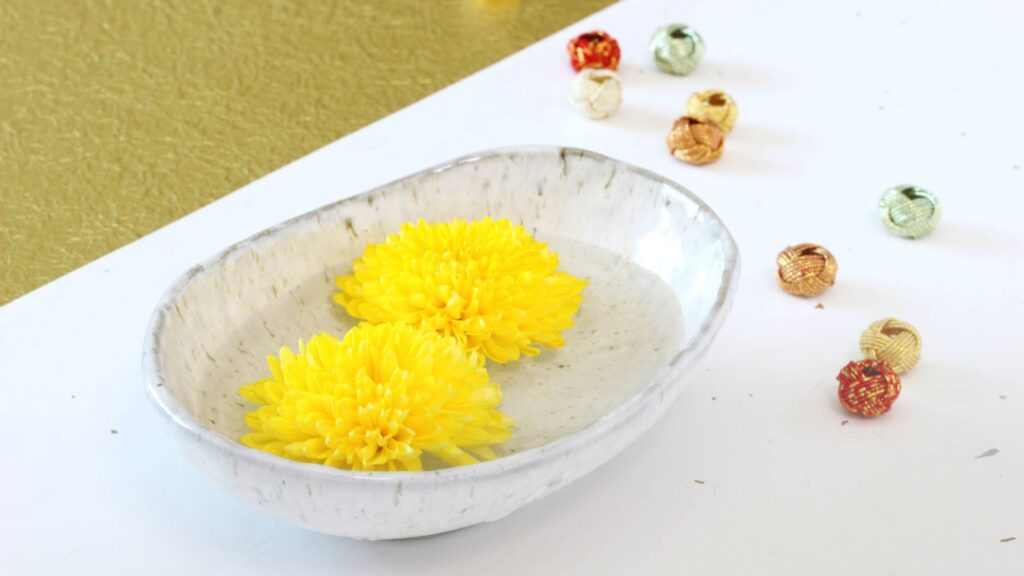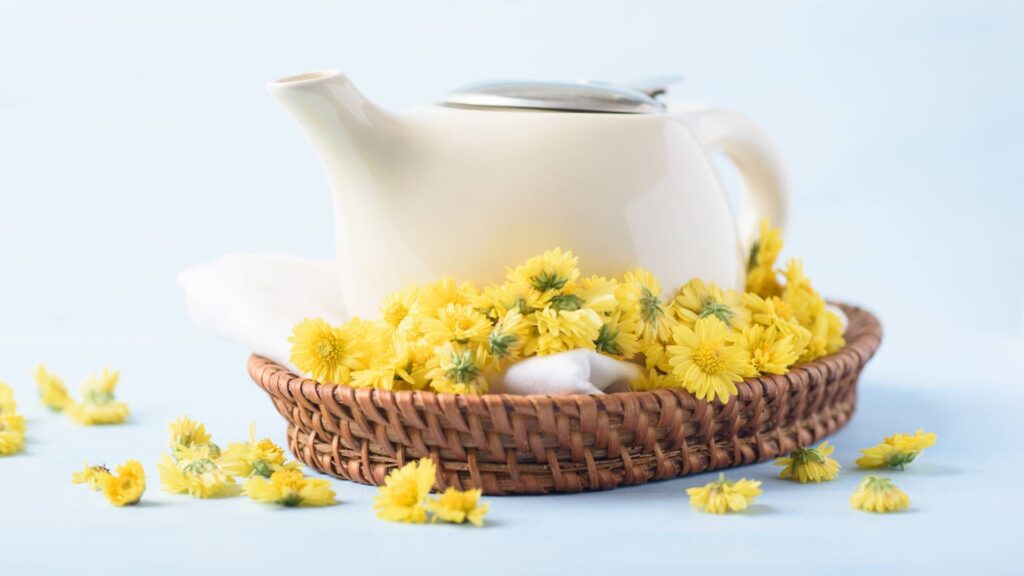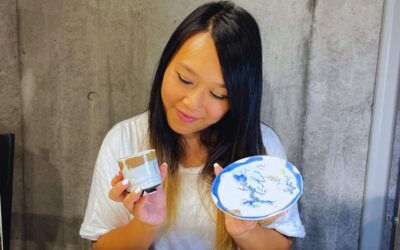Are you looking to dive into traditional Japanese celebrations? We’ve got you covered 🤗
The 9th of September is Chou-you-no-Sekku, one of the five seasonal festivals. Also known as the Chrysanthemum Festival, people drink chrysanthemum wine and eat chestnut rice to wish for good health and long life.
Although it is a less familiar Sekku festival these days, it used to be actively held as the last event to conclude the five Sekku festivals until the days when the old calendar was used. In this article, we introduce the food and origin of Chou-you-no-Sekku.
History of Chou-you-no-Sekku

Originating in China, Chou-you-no-Sekku was introduced to Japan at the beginning of the Heian period (794-1185).
In ancient China, odd numbers were considered auspicious ‘yang’ numbers, and even numbers were supposed to be unlucky ‘yin’ numbers. The 9th of September, when the most significant yang number, 9, overlapped, was called ‘Chou-yang.’

The 9th of September in the lunar calendar is around mid-October today, precisely the time when chrysanthemums bloom beautifully. Chrysanthemums were believed to be ‘elixirs blooming in the fairyland’ and effective in warding off evil spirits and promoting longevity. Because chrysanthemums were used in events, Chou-you-no-Sekku is also known as the ‘Chrysanthemum Festival.’ On Chou-you-no-Sekku, people drink ‘chrysanthemum wine’ with the fragrance of chrysanthemums transferred to it to ward off evil spirits and wish for good health and long life.
In Japan, the festival became a court event at the beginning of the Heian period (794-1185), when the Kangiku-no-En (banquet to admire chrysanthemums) was held, and chrysanthemums were used to drive away evil spirits. Over time, the custom of chrysanthemums spread to the general public, and by the Edo period, it had become a familiar event known as one of the five seasonal festivals.
Traditional foods for Chou-you-no-Sekku

Chou-you-no-Sekku also has ‘event foods,’ such as chirashi-zushi eaten on the 3rd of March (Peach Festival) and oak cakes eaten on the 5th of May (Boys’ Festival). Event food is a meal eaten during traditional events and festivals to express gratitude for the blessings of nature throughout the year. They also include prayers for good health and incorporate seasonal ingredients.

On Chou-you-no-Sekku, it is believed that drinking ‘chrysanthemum wine’ while appreciating chrysanthemums will bring long life. Chrysanthemum wine is made by placing steamed chrysanthemum petals in a bowl, pouring cold sake into the bowl, and leaving it overnight to transfer the fragrance. Steamed and dried chrysanthemum petals were also used in chrysanthemum cooking. Nowadays, chilled sake is usually poured into sake cups sprinkled with chrysanthemum petals. As Chou-you-no-Sekku coincided with the harvesting of crops, it was also celebrated by the common people as the ‘Chestnut Festival,’ with ‘chestnut rice.’

There is also a legend that if you eat aubergines on Kunchi (the ninth day of the ninth month), you will not get a midwind. Kunchi is one of the known names for autumn festivals celebrating the harvest. The name ‘kunchi’ was established as the festival occurred on the 9th of September of the lunar calendar, during the Chou-you-no-Sekku, or Chou-you-no-Sekku.
The Nagasaki Kunchi and Karatsu Kunchi held in Kyushu are remnants of this. Today, the festival is held every year in October of the new calendar year. ‘Chukofu’ is a general term for symptoms such as fever, chills, and headache. On Chou-you-no-Sekku, people ate aubergine dishes such as ‘nibbled aubergine’ and ‘grilled aubergine’ to pray for longevity and good health.
How to celebrate Chou-you-no-Sekku?
Chou-you-no-Sekku is not only a time for eating food but also for a variety of other events.
Chrysanthemum dressing cotton

The day before the Kangiku banquet, chrysanthemum flowers are covered with cotton. On the morning of the feast, the cotton cloth containing the fragrance and dew of the chrysanthemums is used to wipe the face and body.
Interestingly, the cotton was used to wipe the face and body and pray for good health.
Chrysanthemum baths and chrysanthemum pillows

On Chou-you-no-Sekku, people bathe in baths filled with chrysanthemums and sleep on chrysanthemum pillows stuffed with dried chrysanthemum petals. It was believed that the fragrance of chrysanthemums had the power to ward off evil spirits.
Chrysanthemum matching

The Kiku Match is an event where carefully nurtured chrysanthemums are brought together to compete in terms of their beauty.
Even today, chrysanthemum fairs and appreciation events are still held in many places.
Final Thoughts

To sum up, Chou-you-no-Sekku is a festival to pray for good health. If you are not familiar with chrysanthemums, why not enjoy chrysanthemum wine and chestnut rice this year to ward off evil spirits? There are wide varieties of chrysanthemums, from large-flowered to small ones, so you can choose the one that suits you best, and enjoy Chou-you-no-Sekku by decorating your room with chrysanthemums on the 9th of September.








